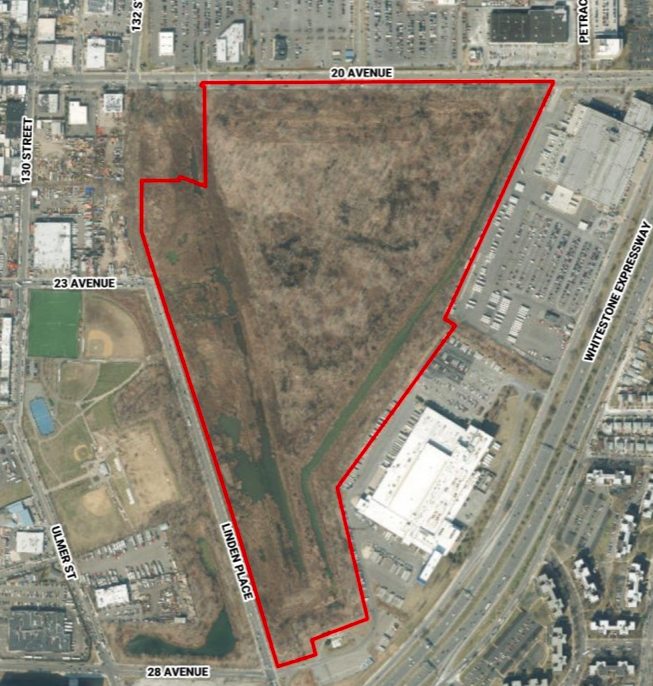
Real Mixed Use For Airport Tract
The NYC Economic Development Corp has called for proposals to develop the 80-acre plot of land that was part of the former airfield in College Point called Flushing Airport. The airport was built in 1927, and was the major airfield in New York until LaGuardia was developed in 1939. Used by smaller aircraft after that, the airfield finally closed in 1984 and has been pretty much unused since. Its swampy tract has been a mosquito magnet for decades and with the housing shortage, and remedies prescribed in the ‘City Of Yes’ zoning changes, it might seem converting the whole thing into a housing development would be a slam dunk. But this plot brings with it a great opportunity, and we suggest building housing, with some basic commercial businesses and some ‘community space’ is a weak goal. Public transit in College Point is miserable, it’s a marshland (which makes building housing much more challenging) and being it’s surrounded by industrial uses, we’re not convinced it would be such a great place to live.
The RFP seeks what it calls ‘innovative’ ideas for the use of the land. The EDC suggests housing, plus amenities that can produce jobs, as well as spaces that can be used by the community. Developers have until March 20th to submit proposals, and we presume the favored ones will include the most housing possible. Brand new sterile neighborhoods, built with an ample spec of mixed use, lacks ‘character.’ Just check out Long Island City, between 47th Ave and 57th Avenue along Center Blvd. There’s nothing but residential with maybe one story of commercial use on the ground floor. None of it feels like a community. The commercial part is scantily occupied by useful retail services. What makes LIC great is the Vernon Blvd. stretch of small stores just two blocks east. Thinking ‘outside the box’ necessitates looking at what makes neighborhoods like Greenpoint, Williamsburg, Forest Hills and Ridgewood much more desirable now than ever. Small thousand-square-foot storefronts, some retail, room for eateries, cafes, service businesses and artisan shops.


